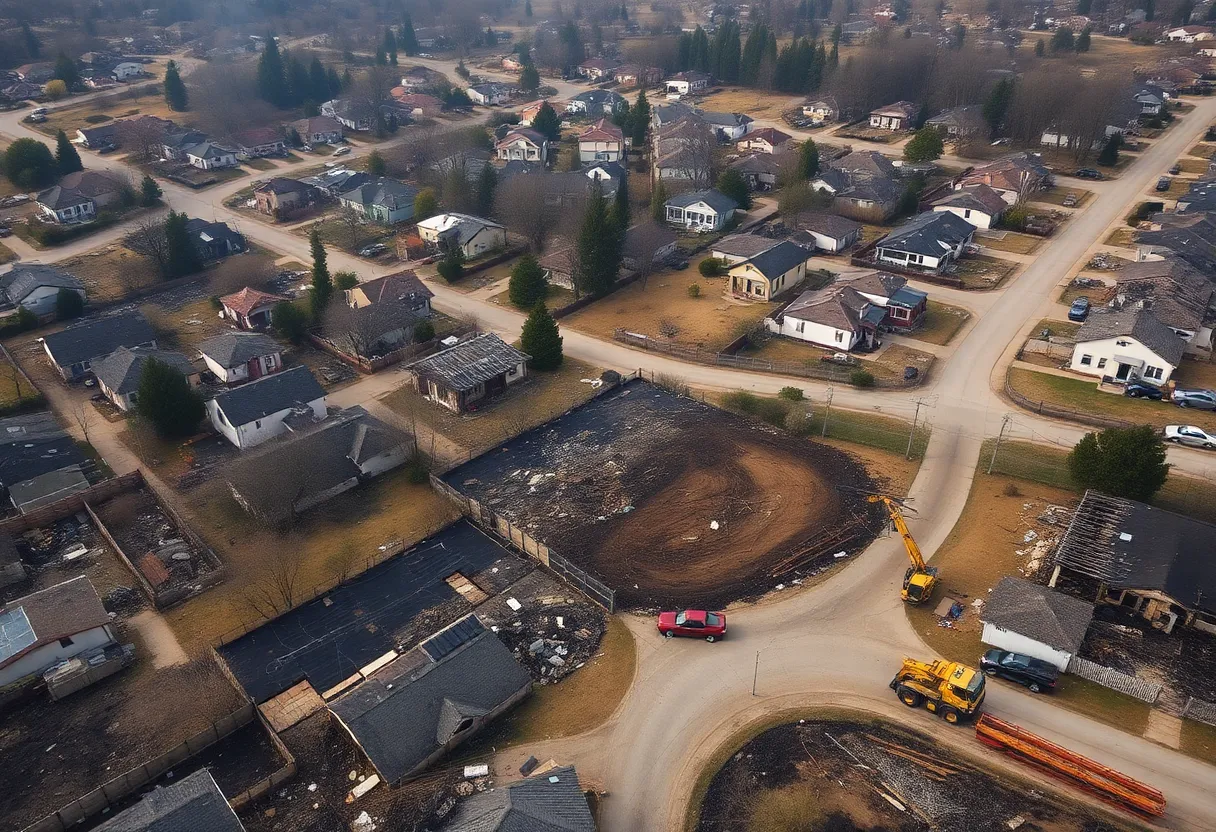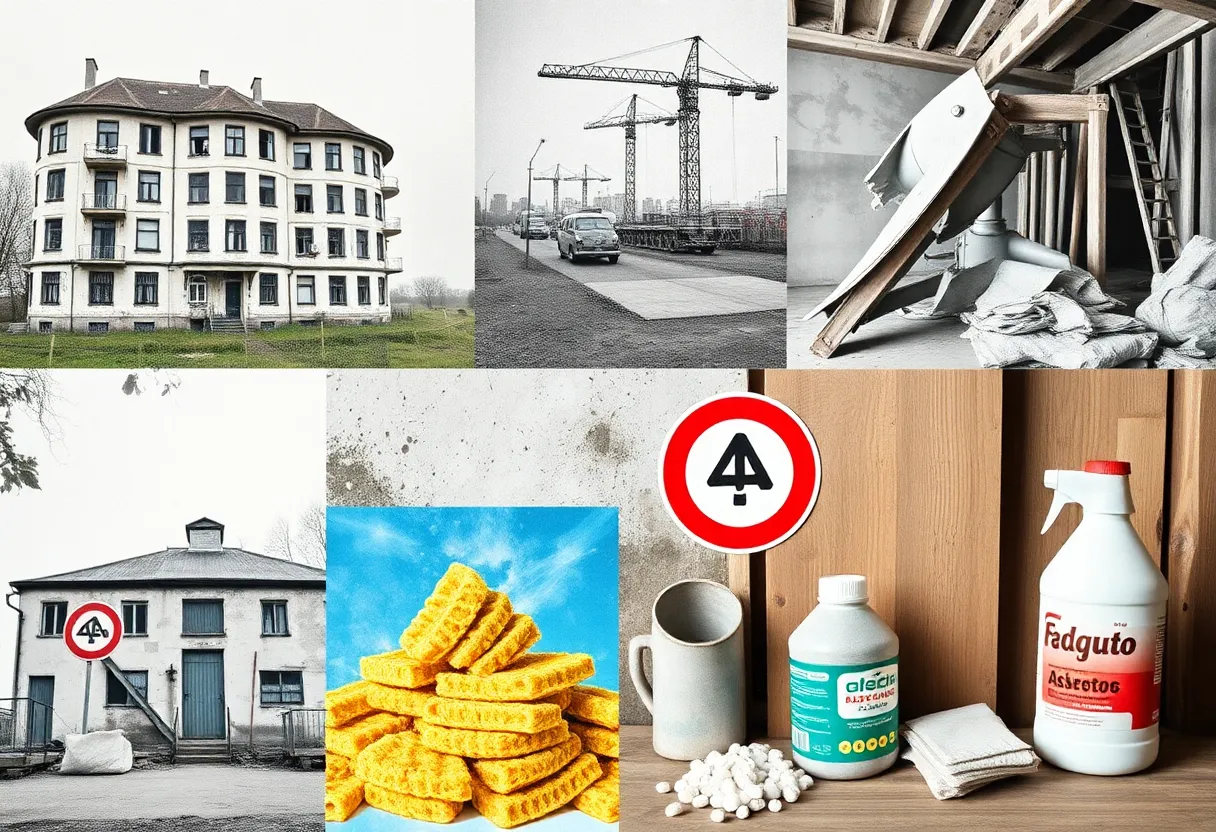News Summary
The Eaton Fire in Altadena, CA, caused significant loss and destruction, highlighting recovery challenges and impacts on the local community.
The Devastating Eaton Fire: Community Recovery and Challenges Ahead
In January 2025, the small community of Altadena, California, was rocked by the devastating Eaton Fire, which resulted in the tragic loss of 30 lives and the destruction of over 16,000 buildings. The aftermath underscores a painful chapter in the history of this community, highlighting issues of recovery, displacement, and the persistent shadow of historical discrimination.
Cleanup Efforts Underway
In response to the overwhelming destruction, the U.S. Army Corps of Engineers was contracted to oversee the cleanup of the fire debris. A colossal 4.5 million tons of debris are set to be removed, requiring approximately 150,000 dump trucks. Homeowners impacted by the fire have a window until April 15 to opt into the government cleanup program by submitting a “Right of Entry” form.
As of now, cleanup operations have progressed, with nearly 1,700 plots already cleaned. The cleanup is divided into two essential phases. The first—hazardous material removal—was completed by the Environmental Protection Agency in late February. This step is crucial as it involves the careful assessment of sites for hazardous materials such as asbestos.
The Process of Recovery
When asbestos is detected, it must be meticulously removed before any further debris can be cleared, taking about 1 to 3 days. To reduce the risk of dust escaping into the air, the ash and debris are kept moist during removal. The debris is transported to three designated landfills, namely Calabasas, Sunshine Canyon, and Simi Valley Landfill, while materials like metal and concrete are slated for recycling at a staging area located at Altadena Golf Course.
Despite the rampant destruction, many homeowners are eager to rebuild as expeditiously as possible. To facilitate this process, the L.A. County Board of Supervisors has established a unified permitting authority aimed at expediting rebuilding efforts, which have faced various delays.
Impacts on the Community
The Eaton Fire disproportionately impacted the Black community in Altadena, with reports indicating that 48% of Black-owned homes suffered significant damage, compared to 37% of homes owned by other racial or ethnic groups. This statistic highlights the long-standing effects of historic racial covenants in the area, which previously restricted homeownership for Black families and altered community dynamics.
This fire destroyed over 9,000 structures in the community, primarily single-family homes, exacerbating long-term recovery and housing concerns. Local organizations like the Greenline Housing Foundation are stepping up to secure housing for displaced residents and to acquire lots, with the aim of preventing corporate buyouts that threaten community integrity.
In a troubling twist, the housing market in Altadena is currently experiencing a surge, with some properties selling for much higher than their asking price, igniting fears of gentrification. A vacant lot, right after the fire, sold for $550,000 in cash, raising eyebrows and drawing interest from outside investors.
Emergency Response and Community Challenges
The events surrounding the Eaton Fire also highlighted failures in emergency response protocols. Delayed evacuation orders left many residents unaware of impending danger until it was too late. Firefighters faced overwhelming challenges, with high winds contributing to the rapid spread of the blaze and extensive radio traffic causing confusion in response efforts.
Residents found themselves making split-second decisions based on limited information as the fire encroached on their properties. These circumstances underscore the gaps in emergency communication, especially during moments of crisis, which have now fueled discussions about preparedness for future disasters.
For many older residents, the weight of rebuilding in a community marked by profound change poses significant challenges, raising questions about the future of their homes and the landscape of Altadena itself. As recovery efforts continue, the community is left to grapple with not only the destruction but the deep-rooted history that has shaped its current reality.
Deeper Dive: News & Info About This Topic
HERE Resources
Compensation for Asbestos Victims: What You Need to Know
Asbestos Removal at Cleveland Centre Ensures Public Safety
Harrowing Oversight: NYC Schools’ Asbestos Inspections Fail to Meet Standards
Veterans at Risk: The Silent Menace of Asbestos Exposure
Upcoming Meeting to Address Asbestos and Plumbing Issues at Greene County Courthouse
Environmental Essentials Expands Its Footprint with Omega Acquisition
Builder Fined for Illegal Asbestos Removal in Manchester
Settlement Reached for Asbestos Victim from Chatham Docks
JoJo Siwa: Navigating Fame Amidst Controversies
Court Convicts Contractor for Illegal Asbestos Removal
Additional Resources
- Los Angeles Times: L.A. County Promises to Speed Up Rebuilding in Altadena
- Wikipedia: Eaton Fire
- The Conversation: How Racism Fueled the Eaton Fire’s Destruction
- Google Search: Eaton Fire Altadena
- NBC News: Altadena Residents Fight Luxury Developers After Eaton Fire
- Google Scholar: Eaton Fire Altadena
- Washington Post: Eaton Fire Destruction in Altadena
- Encyclopedia Britannica: Wildfires



















